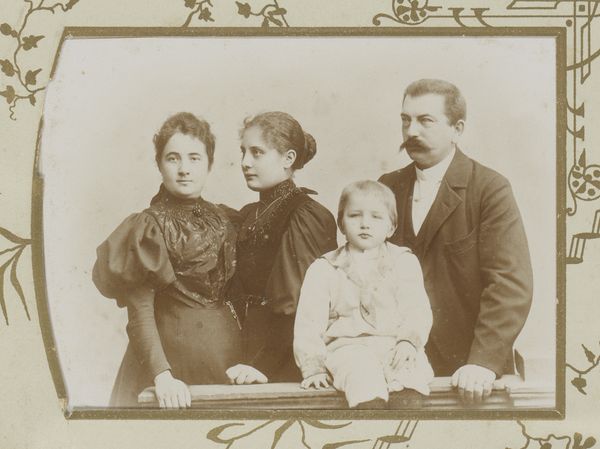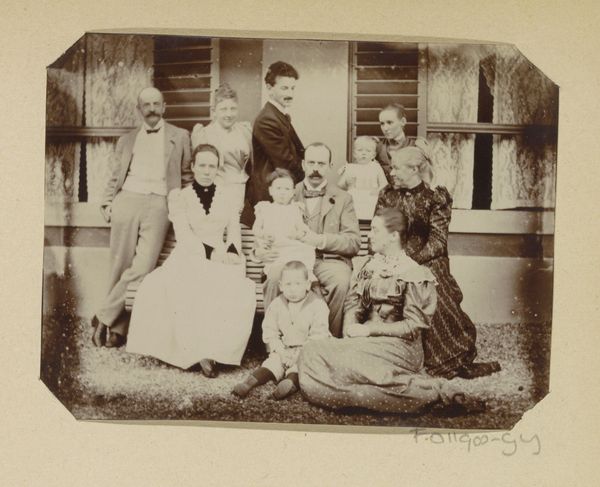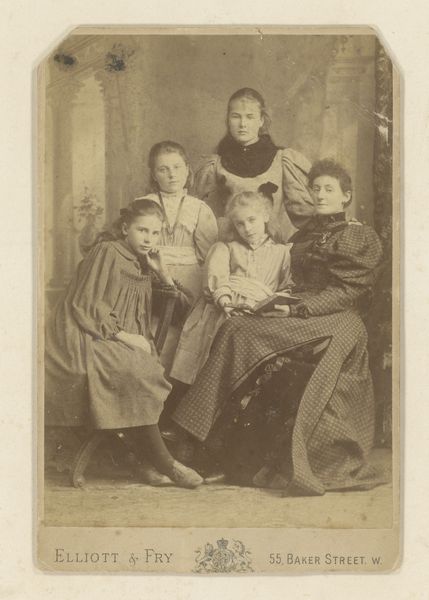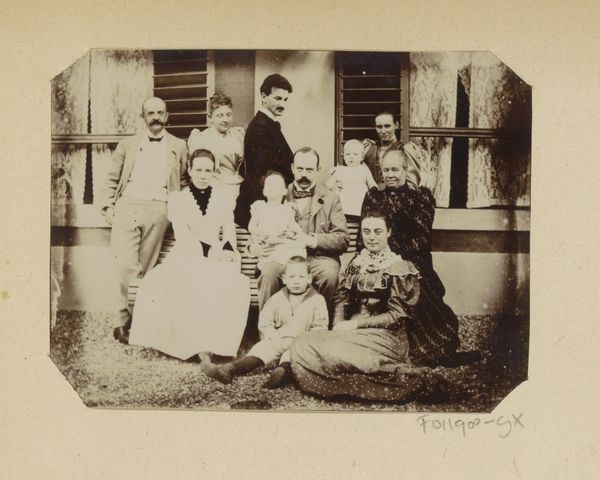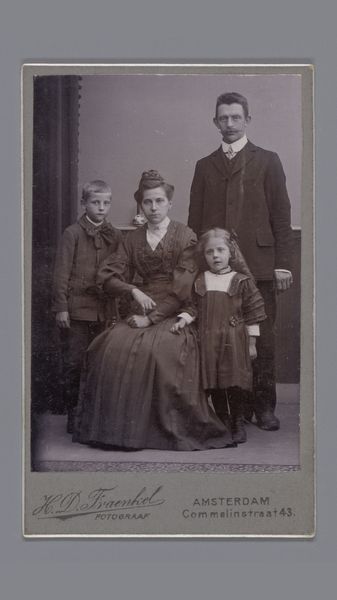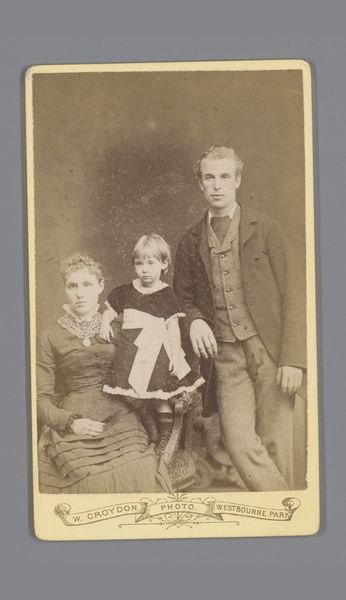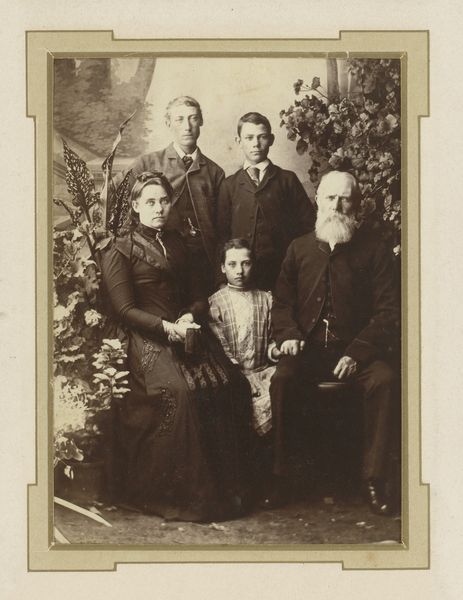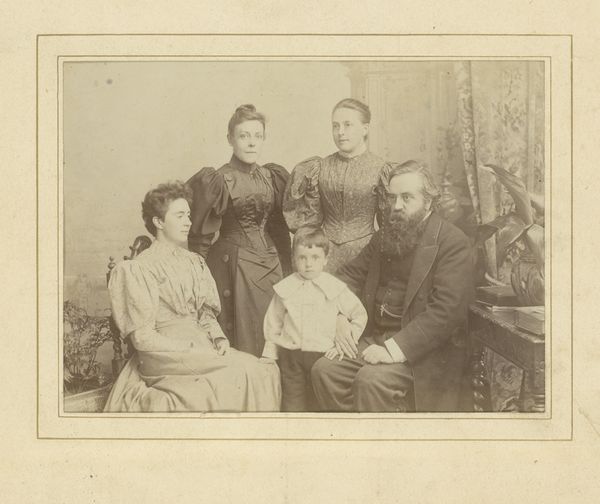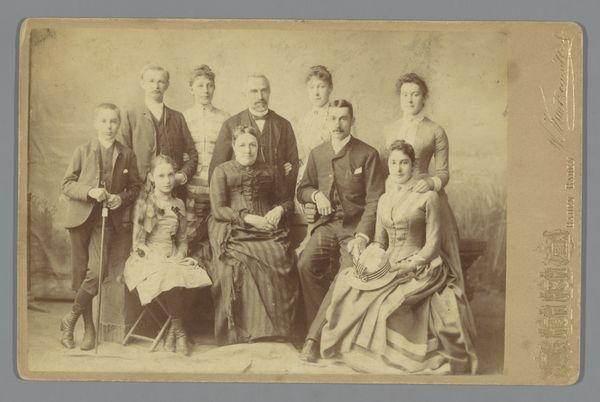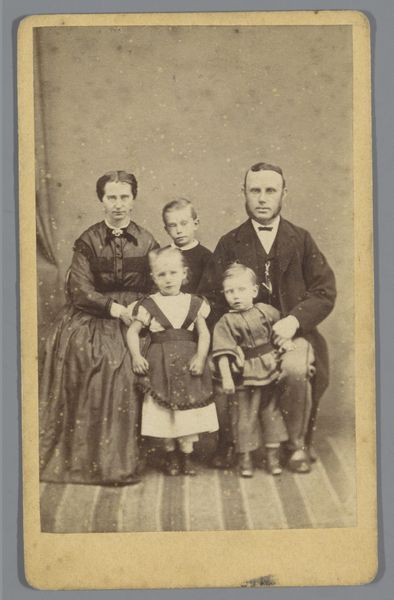![[Vokes Family, New York] by Jeremiah Gurney](/_next/image?url=https%3A%2F%2Fd2w8kbdekdi1gv.cloudfront.net%2FeyJidWNrZXQiOiAiYXJ0ZXJhLWltYWdlcy1idWNrZXQiLCAia2V5IjogImFydHdvcmtzLzY0Y2Q5OWJiLTYwM2MtNDY4Zi1iOGMzLTc5MWQ0YzRkOWUwZi82NGNkOTliYi02MDNjLTQ2OGYtYjhjMy03OTFkNGM0ZDllMGZfZnVsbC5qcGciLCAiZWRpdHMiOiB7InJlc2l6ZSI6IHsid2lkdGgiOiAxOTIwLCAiaGVpZ2h0IjogMTkyMCwgImZpdCI6ICJpbnNpZGUifX19&w=3840&q=75)
photography, gelatin-silver-print
#
portrait
#
wedding photograph
#
photography
#
historical photography
#
group-portraits
#
gelatin-silver-print
#
genre-painting
Dimensions: 13.7 x 9.2 cm. (5 3/8 x 3 5/8 in.)
Copyright: Public Domain
Curator: Here we have a gelatin-silver print from around 1870, a group portrait titled "[Vokes Family, New York]" by Jeremiah Gurney. Editor: The sheer amount of fabric on display is remarkable. The textures and patterns – silks, lace, dark wools—tell me so much about Victorian society. Curator: Absolutely. Family portraits were a crucial tool for the aspirational middle class; a form of social display. Photography studios like Gurney’s were booming, providing accessibility to portraiture once reserved for the wealthy elite. The poses, too, are so consciously constructed to project status and belonging. Editor: Yes, look at the layers. Beyond just status, each frill and fold speaks to a vast network of labor. Think of the seamstresses, the weavers… and where did the raw materials originate? The scale of the garment industry at this point is something we can understand even more when encountering images like these. Curator: And that touches upon the global dimension. Raw cotton picked by enslaved laborers in the American South feeding British textile mills... This photograph, like many artifacts of its time, holds within it a complex network of exploitation. And then it is later captured with silver, a highly valued commodity. Editor: Indeed, that material cost of both the making and then the medium—photography—reflects what a deliberate decision the Vokes Family was making about preserving their likeness this way. I’m intrigued by the use of the gelatin-silver process itself—how that technological innovation transformed image-making. Curator: It speaks to how rapidly photography developed in the latter half of the 19th century, changing concepts of realism and representation. The public consumption of images began to impact artistic production in really dramatic ways at this point in history. Editor: Precisely. Seeing how images, both still and moving, and increasingly colorized, altered society is really quite relevant when understanding contemporary labor and manufacturing. Curator: Examining this group through a historical lens gives us a richer understanding of the social and technological landscape of the time. Editor: And for me, focusing on the labor and the materials themselves connects us with the individuals whose work made the photograph possible.
Comments
No comments
Be the first to comment and join the conversation on the ultimate creative platform.
